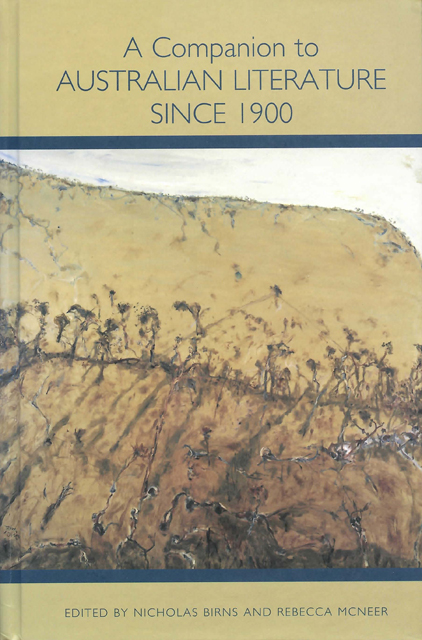Book contents
- Frontmatter
- Dedication
- Contents
- Chronology of Main Events in Australian History, 1901–2005
- Acknowledgments
- Note on the Cover Illustration and Artist
- Introduction
- Part 1 Identities
- Part 2 Writing Across Time
- Part 3 International Reputations
- Part 4 Writers and Regions
- Part 5 Beyond the Canon
- Notes on the Contributors
- Index
4 - Multicultural Writing in Australia
Published online by Cambridge University Press: 10 March 2023
- Frontmatter
- Dedication
- Contents
- Chronology of Main Events in Australian History, 1901–2005
- Acknowledgments
- Note on the Cover Illustration and Artist
- Introduction
- Part 1 Identities
- Part 2 Writing Across Time
- Part 3 International Reputations
- Part 4 Writers and Regions
- Part 5 Beyond the Canon
- Notes on the Contributors
- Index
Summary
Multiculturalism, Writes Pnina Werbner, is “an important rhetoric and an impossible practice” (Werbner and Moddod 22). As I open my morning paper on Australia Day 2006, I am reminded of just how important, and how impossible, Australian multiculturalism remains three decades after its inception. “PM claims victory in culture wars,” reads the front-page headline. The article, a report on John Howard’s address to the National Press Club, details the Prime Minister’s retreat from the “excesses of multiculturalism” and the “black armband” view of history associated with the Keating Labor government (1991–96), and his conviction that the “divisive, phoney debate about national identity” has come to an end, replaced by greater “balance” in matters of diversity and identity (Grattan). In an extract from the speech published on the opinion page of the same paper I read: “We’ve drawn back from being too obsessed with diversity to a point where Australians are now better able to appreciate the enduring values of the national character that we proudly celebrate and preserve” (Howard). However, as Michelle Grattan’s cover story points out, an extra 1,200 police were called out on the same day to patrol Sydney’s beaches, where racially motivated violence had broken out between youth gangs. Commentators were quick to point out that the Cronulla riots, the most serious example of civil unrest in Australia since the introduction of multiculturalism, did little to confirm the Prime Minister’s confident proclamation. It was difficult to reconcile his notion of “balance” with the racism that had surfaced in these eruptions. If the Prime Minister worried about an excess of multiculturalism, others worried that the retreat from multiculturalism was leading to excesses of a much more dangerous kind.
The “White Australia policy,” introduced soon after Federation in 1901, ensured that Australia in its first half century became an immigrant nation almost exclusively British in character. When restrictions on non- British immigration were eased after the Second World War to allow migration from other parts of Europe, it was initially expected that migrants would assimilate into the Anglo-Celtic mainstream and abandon the languages and cultures of their homelands. By the 1970s, however, the social and political climate was changing.
- Type
- Chapter
- Information
- A Companion to Australian Literature since 1900 , pp. 73 - 86Publisher: Boydell & BrewerPrint publication year: 2010



